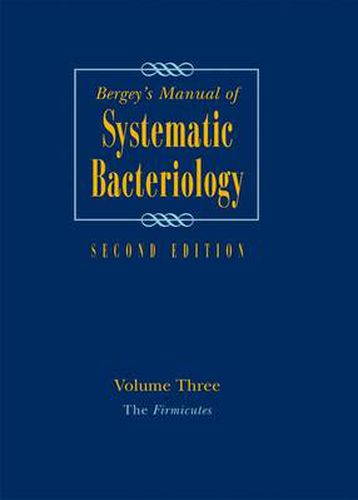Readings Newsletter
Become a Readings Member to make your shopping experience even easier.
Sign in or sign up for free!
You’re not far away from qualifying for FREE standard shipping within Australia
You’ve qualified for FREE standard shipping within Australia
The cart is loading…






Bergey’s Manual of Systematic Bacteriology, one of the most comprehensive and authoritative works in the field of bacterial taxonomy, has been extensively revised in the form of a five volume Second Edition. Since the first edition was published in 1984, the field has undergone explosive growth, with over 2,200 new species and 390 new genera having been described. This new edition has been completely reorganized along phylogenetic lines to reflect the current state of prokaryotic taxonomy but still maintains the familiar layout of the First Edition. In addition to the detailed treatments, provided for all of the validly named and well-known species of prokaryotes, new ecological information and more extensive introductory chapters have been added. Use of the manual is aided by a system of cross referencing between the phylogenetic groups and the phenotypic groups used in the First Edition.
$9.00 standard shipping within Australia
FREE standard shipping within Australia for orders over $100.00
Express & International shipping calculated at checkout
Bergey’s Manual of Systematic Bacteriology, one of the most comprehensive and authoritative works in the field of bacterial taxonomy, has been extensively revised in the form of a five volume Second Edition. Since the first edition was published in 1984, the field has undergone explosive growth, with over 2,200 new species and 390 new genera having been described. This new edition has been completely reorganized along phylogenetic lines to reflect the current state of prokaryotic taxonomy but still maintains the familiar layout of the First Edition. In addition to the detailed treatments, provided for all of the validly named and well-known species of prokaryotes, new ecological information and more extensive introductory chapters have been added. Use of the manual is aided by a system of cross referencing between the phylogenetic groups and the phenotypic groups used in the First Edition.